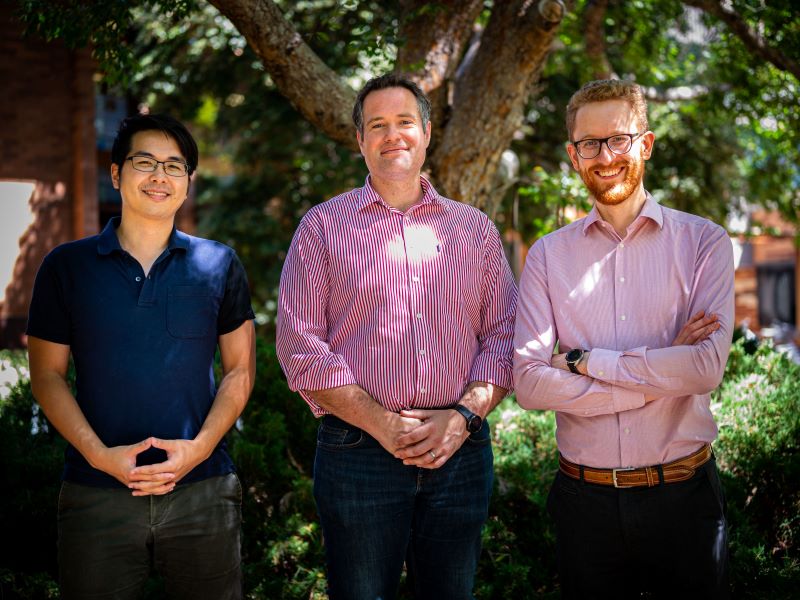Australian-German startup Quantum Brilliance has closed a $13 million seed investment co-led by a consortium of Main Sequence and the founder of QxBranch, an Australian quantum software spin-out which successfully exited in 2019.
Quantum Brilliance will now go on a hiring spree, seeking to bring on more than 100 new employees by the end of next year split across Australia and Germany. The company has a target to deliver quantum accelerators the size of a lunchbox with over 50 qubits by 2025.
The company told InnovationAus the appetite for deep tech investment in Australia is improving but warned foreign investment barriers and a lack of government funding risked “smothering” the local quantum sector.

Quantum Brilliance uses synthetic diamonds to build quantum accelerators that do not require the near absolute zero temperature or complex laser systems that give other quantum computers a large physical footprint.
The smaller accelerators have the potential to accelerate the adoption of quantum applications by bringing the technology to a wider range of industries.
The startup was founded by Australian National University scientists and an investor, and spun-out from the university in 2019 to focus on commercialisation.
On Wednesday, the company announced it had raised $13 million in seed funding, co-led by Main Sequence, the venture capital firm managing hundreds of millions of dollars for the CSIRO, and Shaun Wilson, the founders of QxBranch, a successful Quantum software startup which was acquired by US quantum computing company Rigetti in 2019.
The investor group also includes large US firms, some with ties to the US Department of Defence.
Quantum Brilliance chief executive Professor Andrew Horsley told InnovationAus the company would now focus on scaling up the power of its quantum systems, scaling down its control structures, and identifying more applications.
“We’ve got a five-year target to have lunchbox-sized devices that are giving you, for certain tasks, a quantum-level of performance. That’s kind of a threshold we see where we can start really providing people with that computational capability,” he said.
The startup will also shore up its German footprint, including hiring up to 75 engineers and physicists overseas and a similar number in Australia.
“We’re working in a part of Germany where that’s one of the global hotspots for diamond science and technology. We are also tapping into that precision manufacturing expertise of Germany and a lot of industry partnerships,” Professor Horsley said.
There are concerns Australia is falling behind in the global quantum technology race despite its history of leadership in the field. The pace of investment has accelerated rapidly around the world and analysis shows local investment is being dwarfed by other leading economies.
Quantum Brilliance co-founder and chief operating officer Mark Luo said Australian investors’ understanding of the quantum opportunity has increased considerably since the startup was spun out of ANU in 2019, but access to early-stage capital was still “insufficient”.
“24 months ago, it was unfamiliar for investors coming into this field. The reason for that is quantum technology seemed more scientific, rather than something that can be translated into commercial outcomes,” he told InnovationAus.
“What we have witnessed in the past 24 months is a dramatic shift towards the tech investments, and part of the beneficiaries of that is quantum technology.”
Mr Luo said the shift is part recognition of Australia’s quantum advantages and the first mover opportunity, but also reflected the signals coming from overseas as more quantum companies list or have successful exits.
“Offshore, a lot of venture investors are starting to recognise that this is once in a generation transformational technology similar to the internet. And players that come in early will make huge amounts of returns.”
But much more institutional and public investment is needed in Australia, he said, because processes for foreign investment, which can stretch into many months for approval, are effectively locking out capital at a time when it is pouring in to other countries.
Professor Horsley said the Australian government, like others, is focused on capturing sovereign capability within quantum technologies, but the approach was hurting smaller domestic firms and not being offset with more public support.
“Australia’s response there has been looking at restricting access to foreign capital and various other support sources to Australian companies. What it’s not doing is then investing into that [quantum] sector that it sees as so critical that it needs to protect.
“And so there’s a real risk of then smothering the Australian quantum industry despite that really strong science base that we’ve got to build off.”
This manifests mostly at the Foreign Investment Review Board, Professor Horsley said, which is currently “incompatible with startup success”.
“If there’s a review process that’s going to take six or 12 months, that’s not a review process that’s compatible with a startup.”
“It needs to take two to four weeks or have whitelisted entities [for faster approval].”
The barriers to private investment could also be offset with more federal and state funding for the quantum sector, Professor Horsley said, including at the early-stage education and research grants, and at the ecosystem level for early stage companies with more initiatives like the Pawsey supercomputing research facility in Perth.
Do you know more? Contact James Riley via Email.

